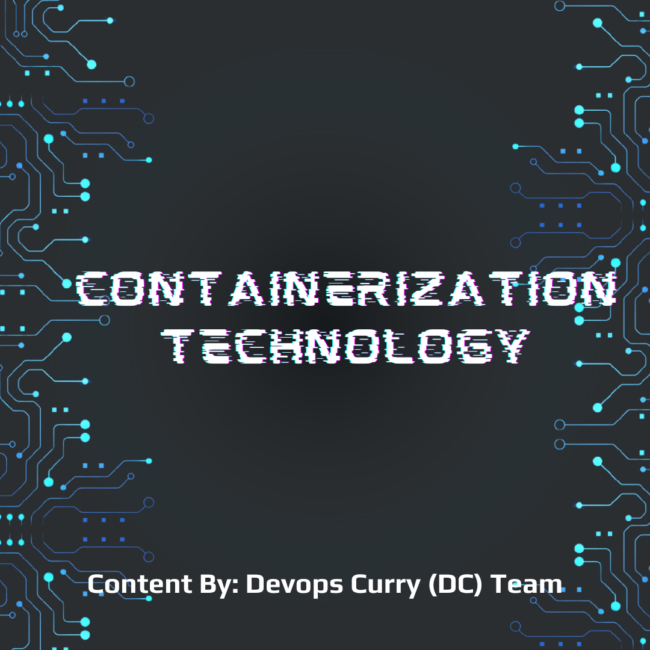What is Containerization Technology?
We have already talked a lot about Docker and Kubernetes in our previous articles. In today’s article, we will be talking about what is containerization technology in general, how it works, its benefits and challenges, and more…
Everything about Containerization Technology
Containerization is a technology in which the application code and its dependencies (such as libraries, runtime, database, etc) are bundled into packages called containers. These containers carry the environment in which the software was originally created and contain everything it needs to run smoothly.
Containerization technology was popularized with the release of Docker as an open-source platform in 2013. Before containers, virtual machines (VMs) and virtualization were more commonly used. However, VMs pose a few shortcomings – like they occupy a lot of disk space and system resources for one. Containerization could solve most of these problems and hence became a preferred alternative to VMs.
Let’s understand more about containerization architecture and how it works…
Working and components
Containerization involves two similar terms: containers and container images.
Containers, as per Google Cloud, can be defined as“…lightweight packages of software that contain all of the necessary elements to run in any environment.”
Container images, on the other hand, are executable files that contain the instructions for creating and running a container. When containers are shared between computers, they are shared in the form of container images.
Now let’s understand the containerization architecture which consists of four layers:
Image credits: Enabling Data Processing at the Network Edge through Lightweight Virtualization Technologies
- Infrastructure: This is the bottom-most layer of the containerization architecture. It includes the physical hardware such as the desktop computer, CPU, server, etc.
- Host’s OS: The host’s OS is the second layer which is further divided into two: the kernel layer and the applications layer. The kernel layer of the OS acts as the communication link between the host’s hardware and the applications layer on which the applications run.
- Container engine: Also known as runtime engine, the container engine creates containers based on the container images. This is known as executing the container images.
- Containerized application: This is the topmost and final layer of the containerization architecture. It consists of the application code and all its dependencies.
Benefits
- Containers are easy to share and highly portable. They allow developers to share and install all the dependencies of the software as a single unit instead of doing it one by one.
- The containers are isolated from each other. They do not interfere with each other’s resources, thus reducing the chances of conflict.
- As long as the host’s operating system (OS) is not at risk, the containers are secure even if one of them gets infected.
- Because the containers do not have their own OS and use the host’s instead, they are lightweight and take up less space.
- Containerization allows flexibility as developers can use different versions and programming languages for different containers.
- Overall, containerization technology helps to improve the speed and efficiency of the software development process.
Containerization vs virtual machines
Here’s a graphic listing the differences between virtual machines and containerization…
Popular containerization tools
As said before, Docker is one of the most popular containerization tools with more than 55,000 customers according to a 2024 report by 6sense.It helps businesses build, test and deploy applications quickly across various platforms. Though it was originally built for Linux OS, it can be used on other OSs using a tool called Docker Desktop.
Kubernetes, also known as K8s, is a popular container orchestration tool that was originally developed by Google in 2008 and then passed on to the Cloud Native Computing Foundation in 2014. Orchestration tools like Kubernetes are required for managing a large number of containers and automating scaling and deployments.
You can learn more about Kubernetes and how it compares to other orchestration tools here – Comparing the best Container Orchestration Tools in 2021: Kubernetes vs Mesos vs Swarm
Drawbacks of containerization
- As all the containers share a common host kernel, if the host’s kernel is at risk, it puts all the containers at risk too.
- On a largescale, hundreds and thousands of containers can be difficult to manage even with orchestration tools.
- Establishing a secure and smooth network between containers can be challenging. It may require tools for automating processes like service discovery and load-balancing.
Conclusion
You can say that containerization is an evolved version of virtualization with higher efficiency and speed. However, both have their own set of advantages and disadvantages. For example, while virtual machines are more suitable for running legacy applications, containerization supports modern approaches to software development like microservices and CI/CD. Moreover, there’s also a possibility of using both of them combined in hybrid environments to leverage both of them’s benefits. That said, it ultimately depends on the needs of the application and the expertise of the company.

